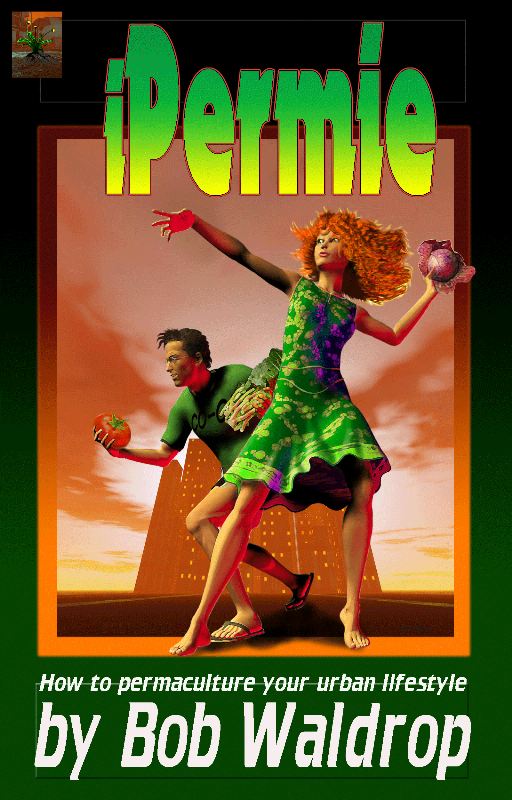Please forward, post and/or announce.
Elfin Permaculture Announces the 15th Annual Permaculture Design Course Online
http://www.barkingfrogspermaculture.org/onlinepdc.htm Registration packet with 62 pages of info about the course --
http://www.barkingfrogspermaculture.org/preregistration.pdf The certificate course runs six months and includes the following learning approaches:
• Extensive reading in books, papers, both in print and on the course CD-ROM;
• 21 modules of at least one week, mainly presented on the CD, representing the formal presentations of course instructors;
• At least four reports from each student, including a full permaculture design report[1];
• Class discussion, via email, of readings and reports, as well as questions and issues raised by students or instructors;
• The opportunity to participate in student study groups where interested students can pursue any agreed-upon topic for as long as they wish (independently of the course schedule);
• Support for students by three instructors: Dan Hemenway, course designer leader; Cynthia Hemenway CNM, designer and discussion leader for a special week on Design for Health, and Robert Waldrop, founder of the Oklahoma Food Cooperative and leader of several online discussion groups, our course moderator and discussion leader. You may read further background of our instructors on our web site. In practice, Robert will lead most discussion groups and review early design work and Dan will review more complete design drafts and provide deep backup throughout, as needed. Cynthia focuses mainly on the Design for Health module and serves as further deep back up for Dan.
The online course consists of three consecutive sections, plus work on a permaculture design which students undertake throughout the cycle in which they are registered. Samples of student design work are included in the course CD. We offer several registration options to accommodate people in varied circumstances including a non-certificate track, certificate training in one six-month cycle, and a two year ‘deliberate track’ that enables a student to participate in two consecutive course cycles and take ample time to prepare the design report for certification.
Content of the course sections:
Section 1: Introduction and Basic Principles
a) World ecological problems and interrelationships.
b) Basics.Principles of natural design. Sustainability and appropriate scale as concepts and principles in permaculture.
c) Permaculture design concepts.
d) Classical landscapes.
e) Patterning, edges, edge effects.
f) The Permaculture Design Report.
g) Principles of transformation (Unique to Elfin Permaculture courses). Succession, logarithmic change, exponential change, chaos, modulation, etc.
Section 2: Appropriate Technologies in Permaculture Design
a) Energy--solar, wind, hydro, biomass, etc.
b) Nutrient cycles (3 modules)--soil, microclimates, gardening methods, perennials, tree crops, food parks, composting toilets, livestock, "pest" management, food storage, seed saving, cultivated systems, forests, etc.
c) Water--impoundments, aquaculture, conservation, etc.
d) Shelter/buildings and access.
e) Design for Health.
Section 3: Social permaculture. Design Report.
a) Design for catastrophe.
b) Urban permaculture.
c) Bioregionalism.
d) Alternative economics.
e) Village development.
f) Final design reports and critiques.
g) Final evaluation.
Monitors
Anyone can monitor the course (receive most course posts). Monitor tuition is free if s/he registers in the same envelope used to send the order for the course CD. (One can also monitor for a fee.) We also sometimes allow potential scholarship candidates to monitor using slightly a slightly older CD that has been returned by a student seeking an update or upgrade. Monitors receive a special Self-Study version of the CD in any case. Inquire.
Course CD & Reading List
During our sabbatical, we conducted a comprehensive review of the course CD, with about 2-dozen major changes or new items, and hundreds (at least) updates, refinements, rewrites, etc. The course CD (all versions) nevertheless has remained at the same price for several years.
The reading list and reading assignments (see Preregistration Package) have been revised reflect changes in availability of documents, newly published materials, etc.
Dan Hemenway
permacltur@aol.com http://www.barkingfrogspermaculture.org



 My brick and poster arrived today. They look even better than their pictures. I predict though that any actual card games played with them will drag on for a bit as people scrutinize each card to see what it's about,
My brick and poster arrived today. They look even better than their pictures. I predict though that any actual card games played with them will drag on for a bit as people scrutinize each card to see what it's about, 

